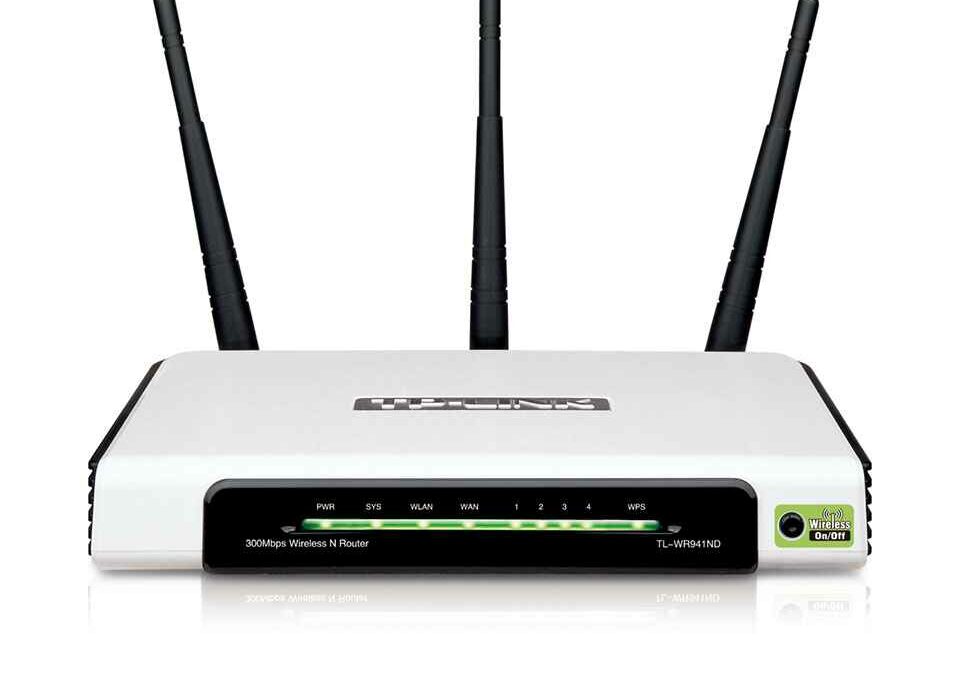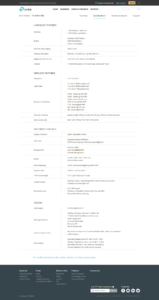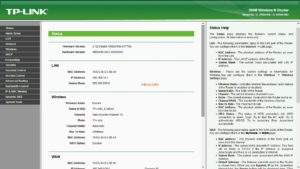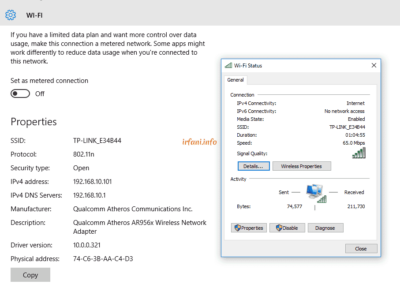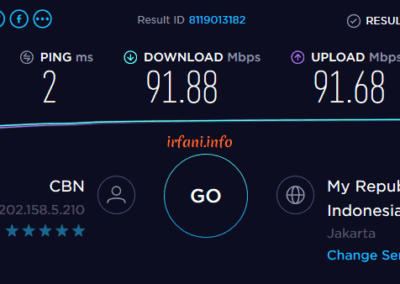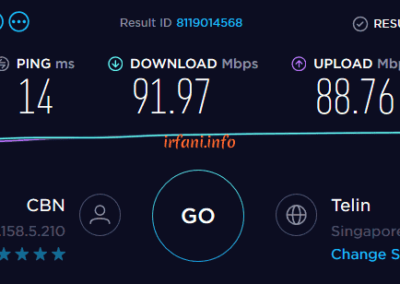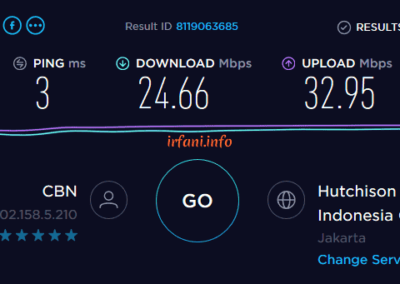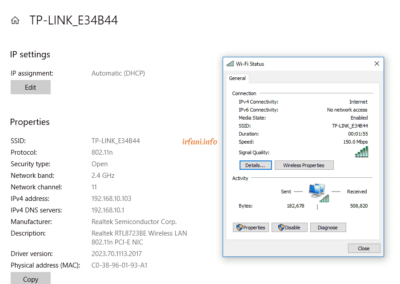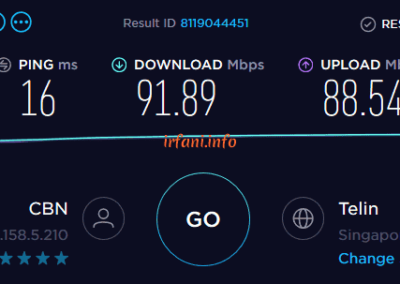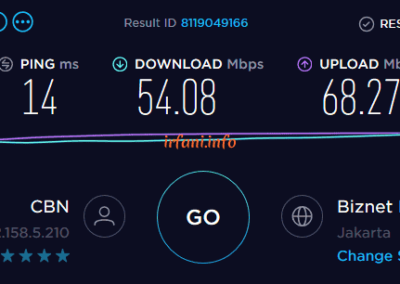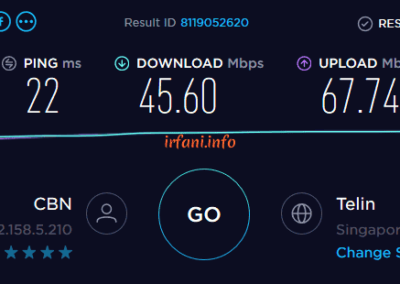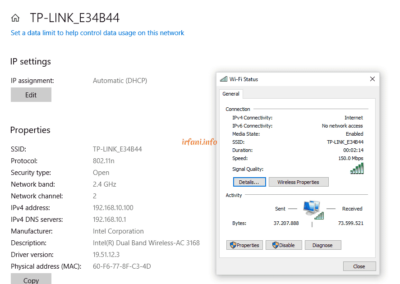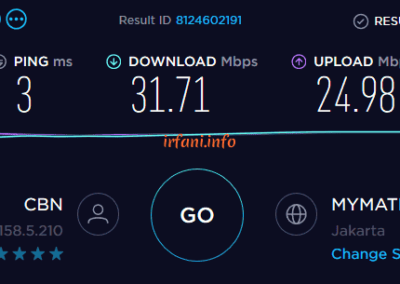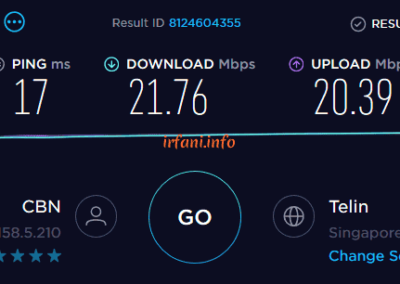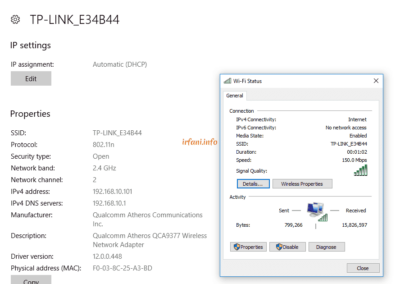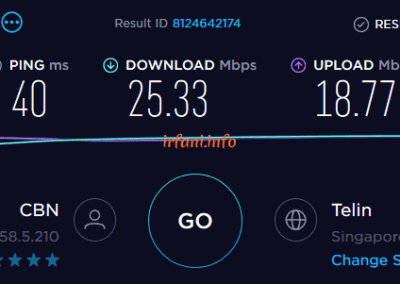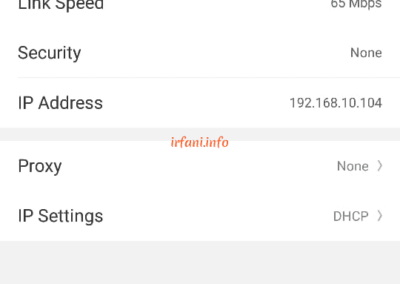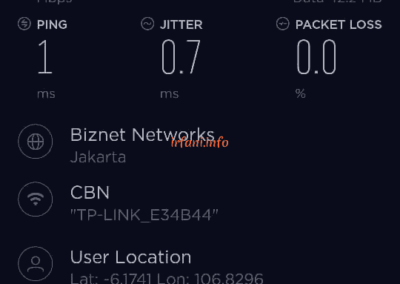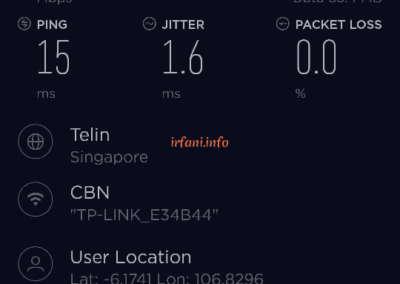This article is a continuation of the previous article which can be read here.
The device I’m trying right now is the TP-Link WR941ND router, here’s a description from the site.
The topology is as follows :
I set the wireless mode to 11n to be more optimal than the other modes and the rest is the default of the router.
The following are the test results of 5 devices :
| Devices | Processor / RAM | Port LAN | Wifi (Mbps) | Ethernet (Mbps) | Wireless (Mbps) | ||||||
| Lokal | Internasional | Lokal | Internasional | ||||||||
| D | U | D | U | D | U | D | U | ||||
| Asus X455LJ | i3 5005U / 8 GB | Gigabit | 65 | 91 | 91 | 91 | 88 | 24 | 32 | 21 | 32 |
| Lenovo G40 | i5 5210U / 4 GB | Gigabit | 150 | 93 | 90 | 91 | 88 | 54 | 68 | 45 | 67 |
| HP 240 G6 | i5 7200U / 8 GB | Gigabit | 150 | 31 | 24 | 21 | 20 | ||||
| Asus TP201S | N3710 / 4 GB | – | 150 | 26 | 13 | 25 | 18 | ||||
| HP Oppo F7 | – | – | 65 | 37 | 36 | 39 | 46 | ||||
The following is an overview of the test :
Asus X455LJ
Lenovo G40
HP 240 G6
Asus TP201S
HP Oppo F7
The conclusion is:
- The TP-Link device I use is still far from the bandwidth it should be, which is 500 Mbps, both with wired media (because the port is still Fast Ethernet) and wireless (because it only supports 2.4 Ghz). I have not yet known and found out how to make the wireless speed can be a maximum of 300 Mbps as informed in the description image above. If there is time and opportunity, I will inform you again.
- Of the 5 devices that I tried, the Lenovo G40 got the highest results both via cable and wireless, it should be that if you look at the device specifications, the HP 240 G6 can exceed that of the Lenovo G40, but I haven’t checked the device in detail, hopefully next time I can check in more detail.
Hope it helps and your day is fun, thank you.

